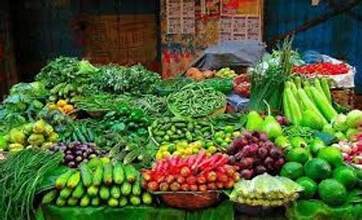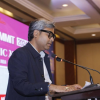India’s retail inflation surged to a 14-month high in October, with the consumer price index (CPI) reaching 6.21%. This uptick, largely attributed to rising vegetable prices, exceeded expectations and pushed inflation beyond the Reserve Bank of India’s (RBI) tolerance range of 2%-6%, as per the latest government data. Factors Behind Inflation SurgeThe primary driver of
India’s retail inflation surged to a 14-month high in October, with the consumer price index (CPI) reaching 6.21%. This uptick, largely attributed to rising vegetable prices, exceeded expectations and pushed inflation beyond the Reserve Bank of India’s (RBI) tolerance range of 2%-6%, as per the latest government data.
Factors Behind Inflation Surge
The primary driver of this inflationary spike was a dramatic increase in food prices, especially vegetables, which rose by 42.18% year-on-year in October. This came after a 36% rise in the previous month. Other food categories also saw significant price hikes, including cereals (6.94%), pulses (7.43%), and oils and fats (9.51%). These escalating food prices are straining household budgets, particularly for middle-income families, and could affect overall consumption and economic growth.
Impact on Consumer Sentiment and Economic Growth
With inflation rising, purchasing power has been squeezed, particularly among middle-income households, leading to concerns about slower economic growth. The RBI had earlier projected a GDP growth rate of 7.2% for the 2024-25 fiscal year, but private forecasters are now revising their growth estimates downward due to weaker-than-expected urban consumption.
Interest Rate Cut Delays
Despite previous signals of a potential interest rate cut by the RBI, the persistent high inflation may delay any rate cuts. “Today’s inflation report likely rules out a rate cut in December, and any change could come only in February,” said Sakshi Gupta, Principal Economist at HDFC Bank. The current inflation figures are also expected to exceed the RBI’s earlier forecast of 4.5% for the current fiscal year.
Outlook for Food Prices and Inflation
Food inflation, which constitutes nearly half of the overall consumption basket, surged to 10.87% in October, up from 9.24% in September. Vegetable prices have seen the sharpest increase, with year-over-year hikes topping 40%. Analysts suggest that persistent inflation could continue to challenge the RBI’s ability to control price stability while promoting economic growth.
Conclusion
India’s inflationary pressures, particularly in food prices, highlight ongoing challenges for both consumers and policymakers. With retail inflation exceeding expectations, the RBI’s ability to cut interest rates in the short term remains uncertain, making it a critical point for India’s economic trajectory in the coming months.




















Leave a Comment
Your email address will not be published. Required fields are marked with *